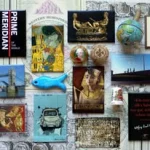Although I grew up in the former Czechoslovakia, I did not have the opportunity to get to know the whole country. Some areas were simply “out of the way” for us – from central Slovakia. So I am always happy when I can get to places I only knew from the map hanging on the school board during geography class. One of those places is the town of Žatec in the northwest of Bohemia, in the Ústí Region. However, I also remember this city because hops are associated with it.

Already when we were approaching the town (75 km from Prague), we saw kilometers of spread wires everywhere. Humulus lupulus, the common hop, creeps along these wires, but by the beginning of September, most of the wires were already empty.
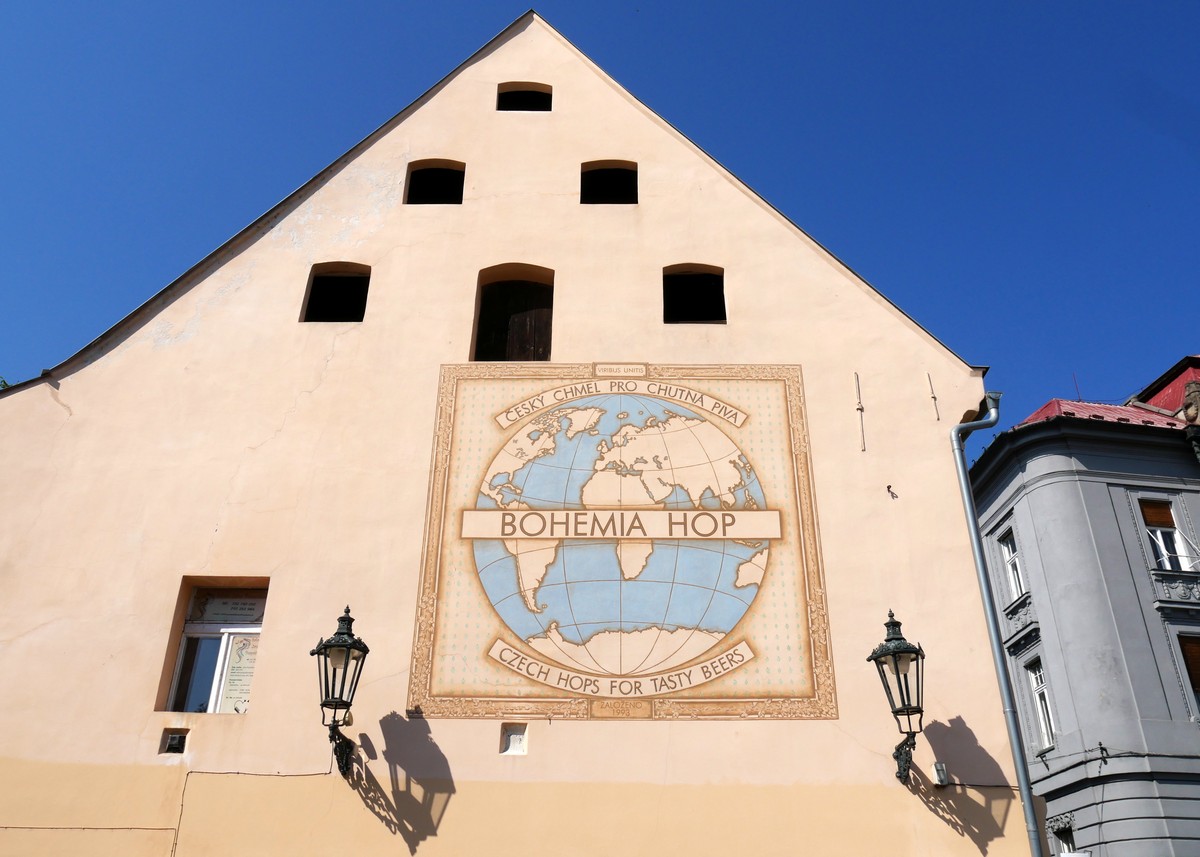
Hops belong to very old cultivated plants. As evidenced by soil pollen analyses, in the surroundings of today’s town (Žatec Valley near the middle course of the Ohře River), the hop plants had already grown in ancient times. The hop had influenced the history of this region for over 800 years.
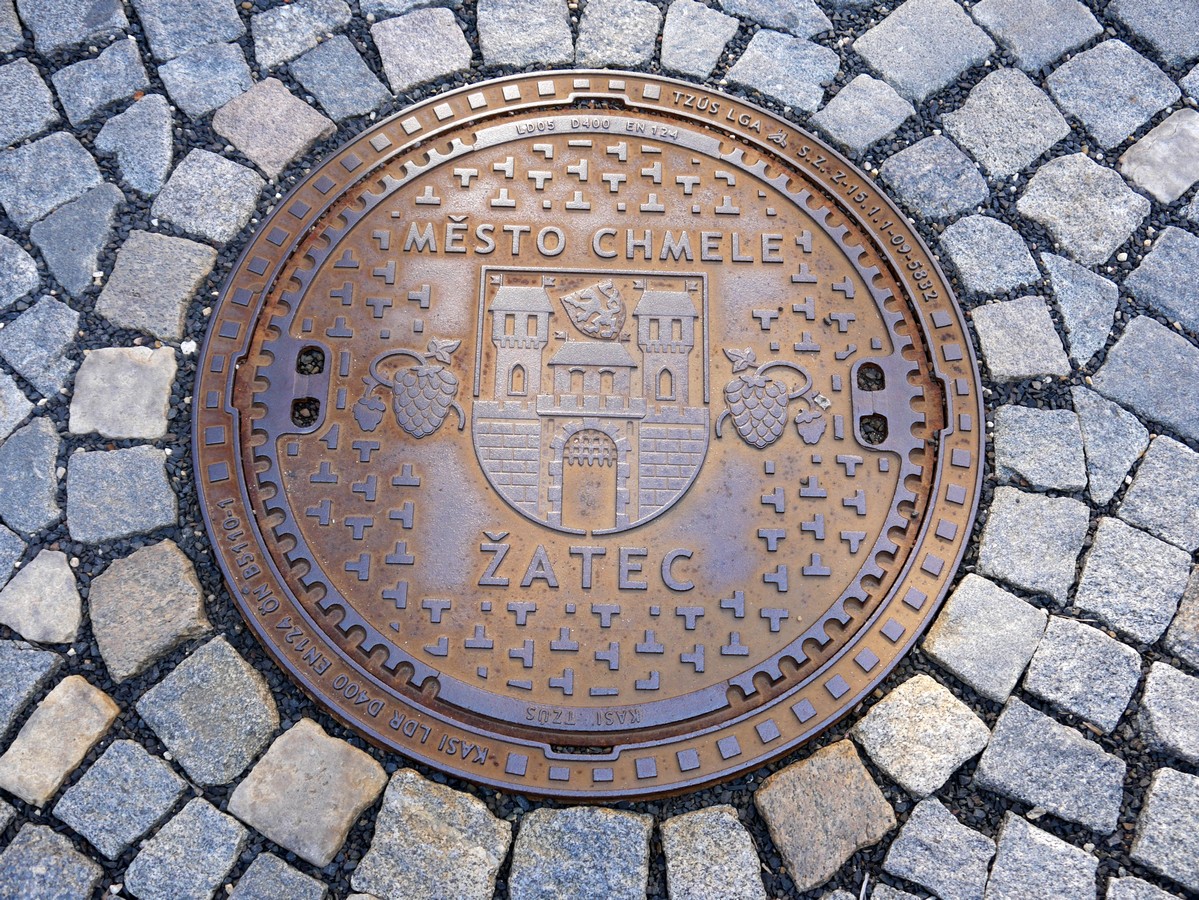
This local hop – Žatec semi-early red (Saaz-hops) – is the highest quality and most valuable variety in the world due to its high content of aromatic substances (lupulin). No wonder locals often refer to this natural phenomenon as green gold and value it so much that they even built a temple for it.
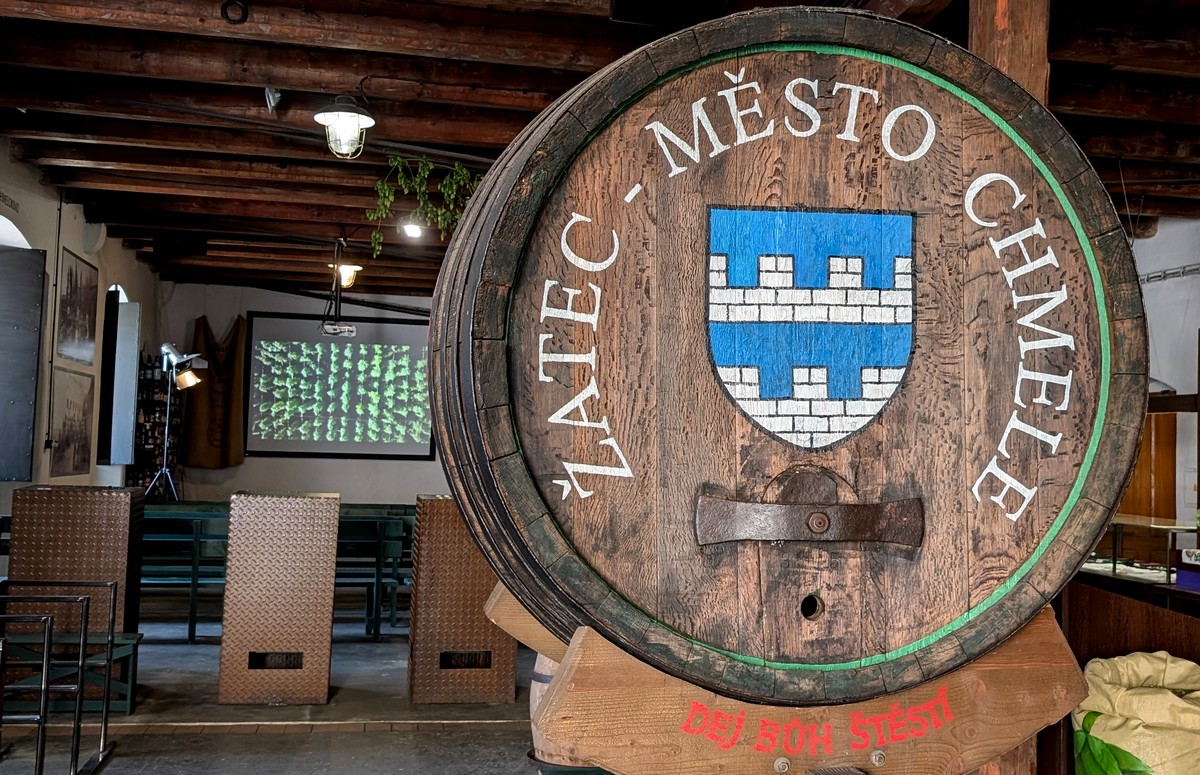
Hop and Beer Temple
The fun and at the same time informative tourist complex is located in a building that served as a warehouse and hop dryer for a hundred years. Now, the tradition of hops and brewing is presented here in a serious, but also funny way.
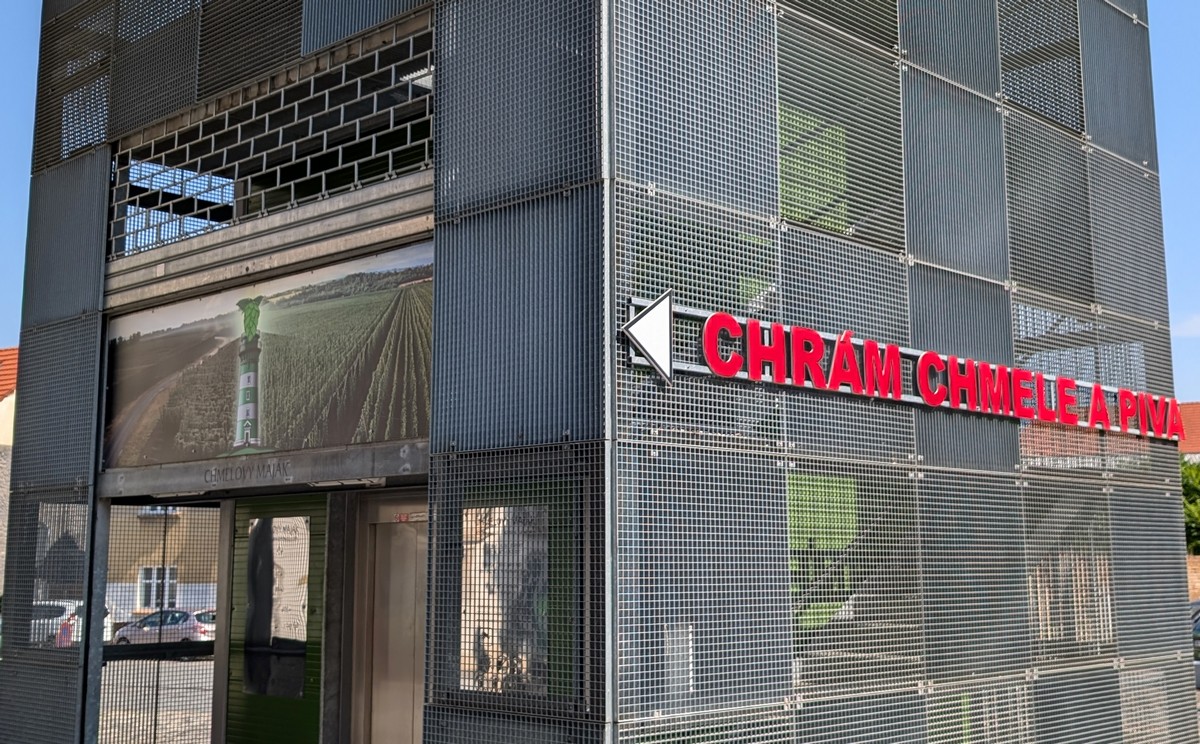
So, for example, right at the beginning I was – without having to stand on a special scale – classified as a Beginner, i.e. to those who drink a maximum of four beers per week, mainly non-alcoholic, fruit or – as it is literally written there – otherwise degraded beer. On the other hand, I am glad I am quite far from the highest degree – a Legend – whose consumption of beer also manifests itself in a specific body shape. 🙂
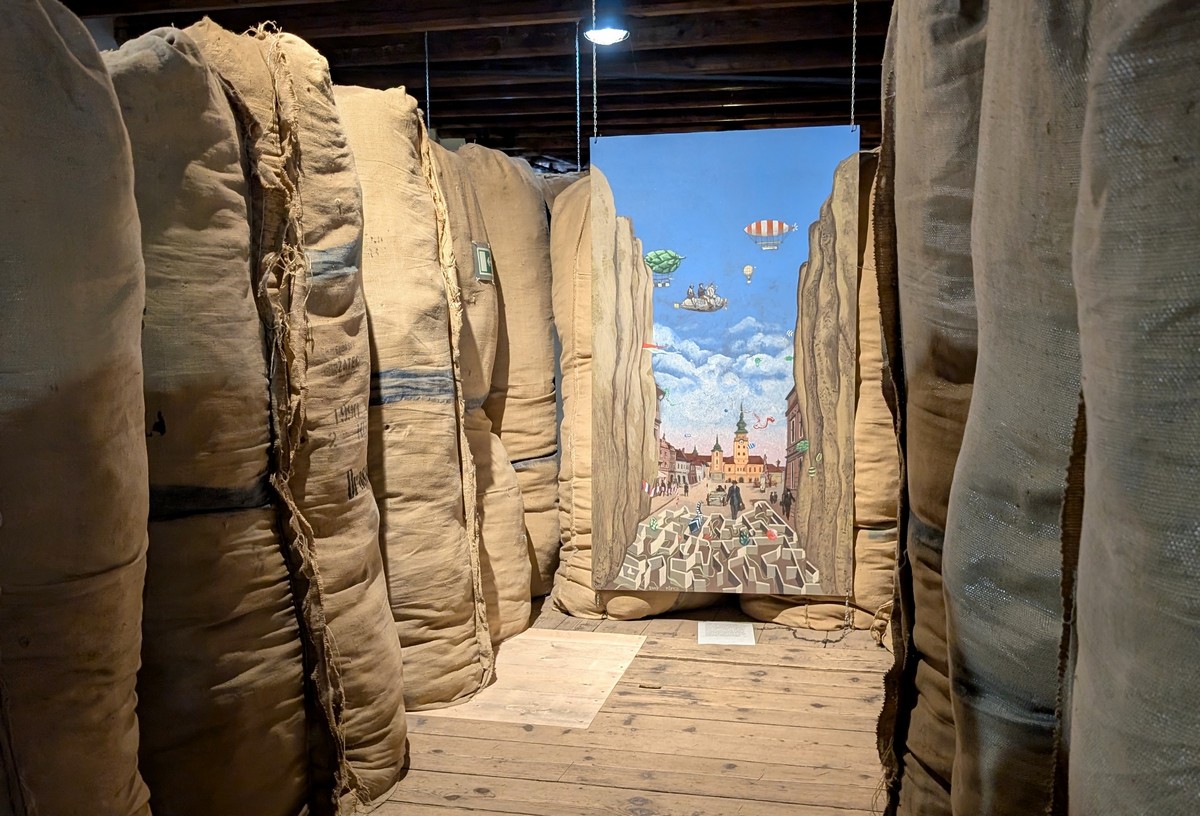
During the tour, we found ourselves in a labyrinth of sacks in which hops were transported for further processing. On the floor between the sacks, hop cones flashed from time to time, which immediately turned into glasses with beer. At the end of the maze, we found a treasure – a huge hop cone made of Czech crystal that changes color. When you are there too, do not forget to touch it and make a wish.
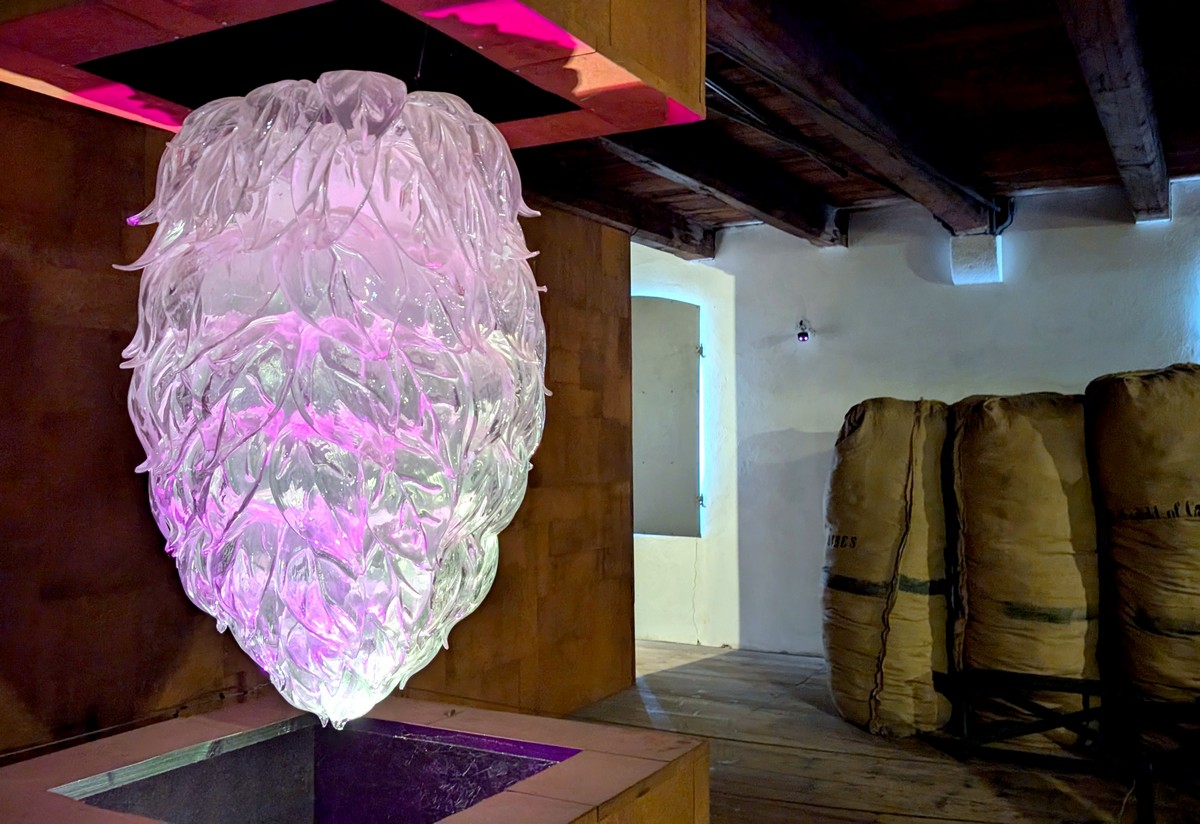
In the Hall of Coats of Arms, you will see the coats of arms of municipalities from the Žatec hop region which have the right to supply hops to the local brewery.
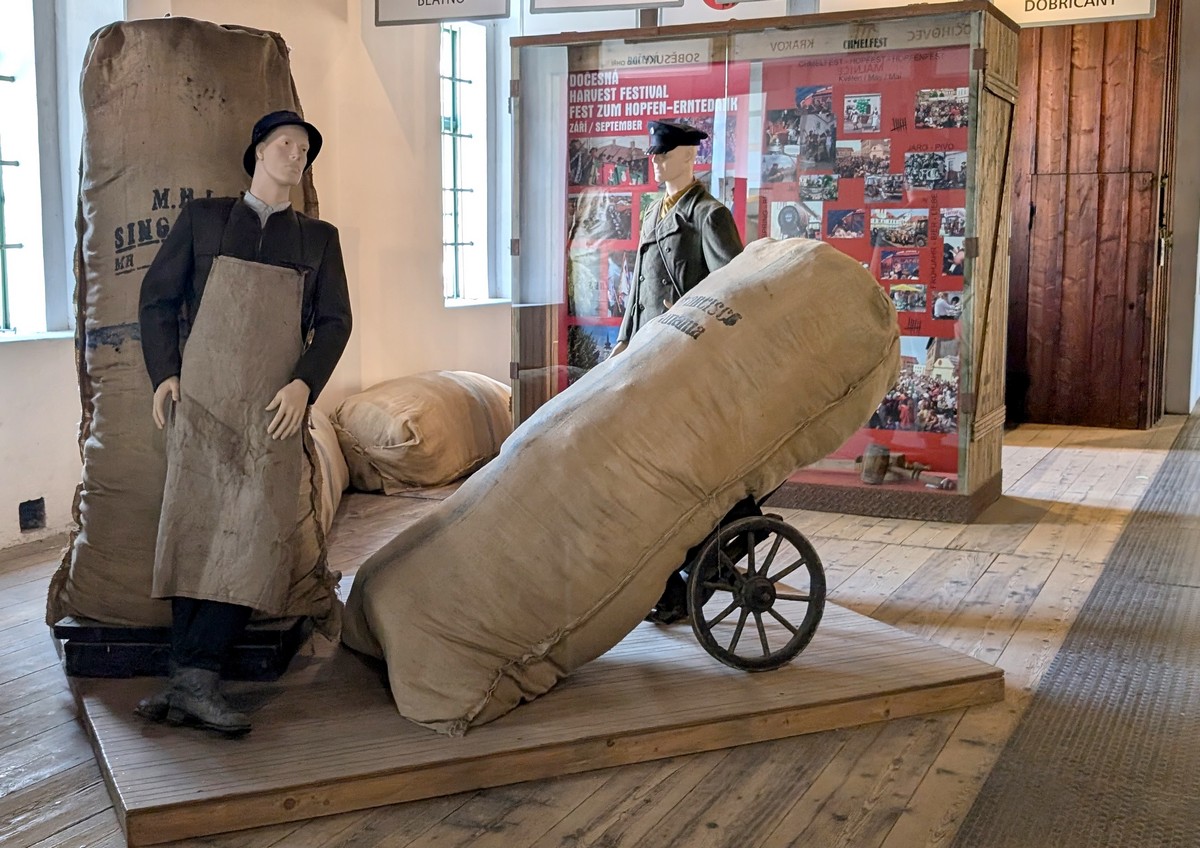
Again, hop sacks are on display, with one even floating above visitors’ heads like an airship. This scene appeared already at the beginning of the 20th century on postcards from Žatec. The image is accompanied by a text in German: I travel all over the world and make the best drops. If you are ever in a bad mood, have a drink made from Žatec hops.
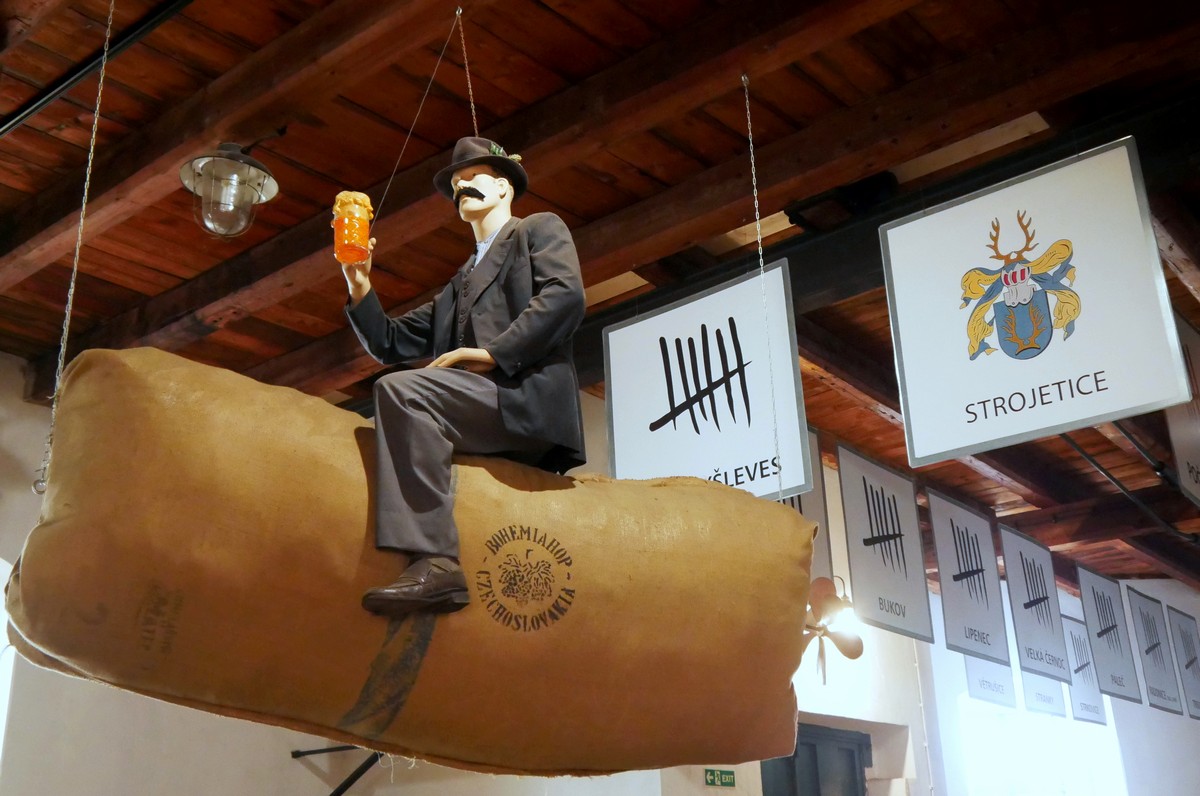
In the baskets, we could see and touch not only hop cones, but also the pressed hop granules that are used in the production of beer and in this form are most suitable for storage and transport.
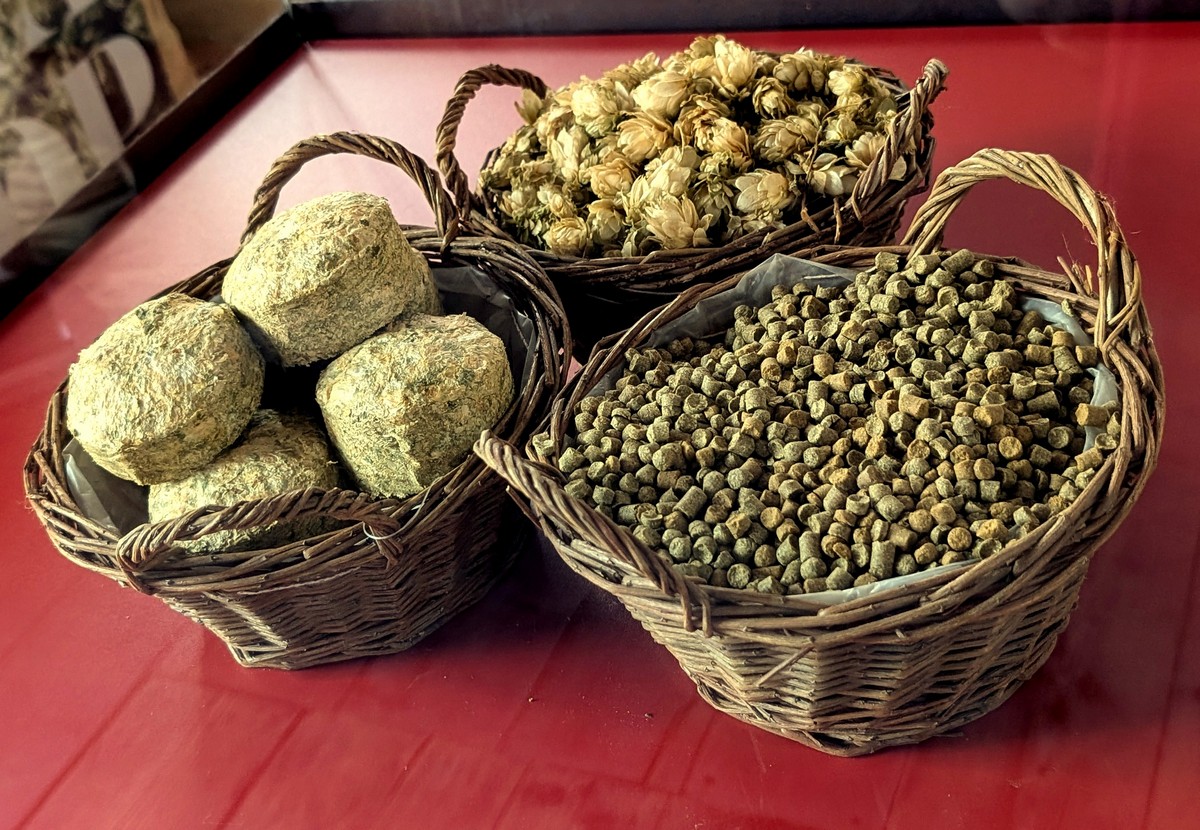
In one showcase we discovered a genuine treasure – a replica of the largest silver treasure of the early Middle Ages in the territory of Bohemia. It was probably buried in the ground before 1012 and was rediscovered during construction work in 1937.
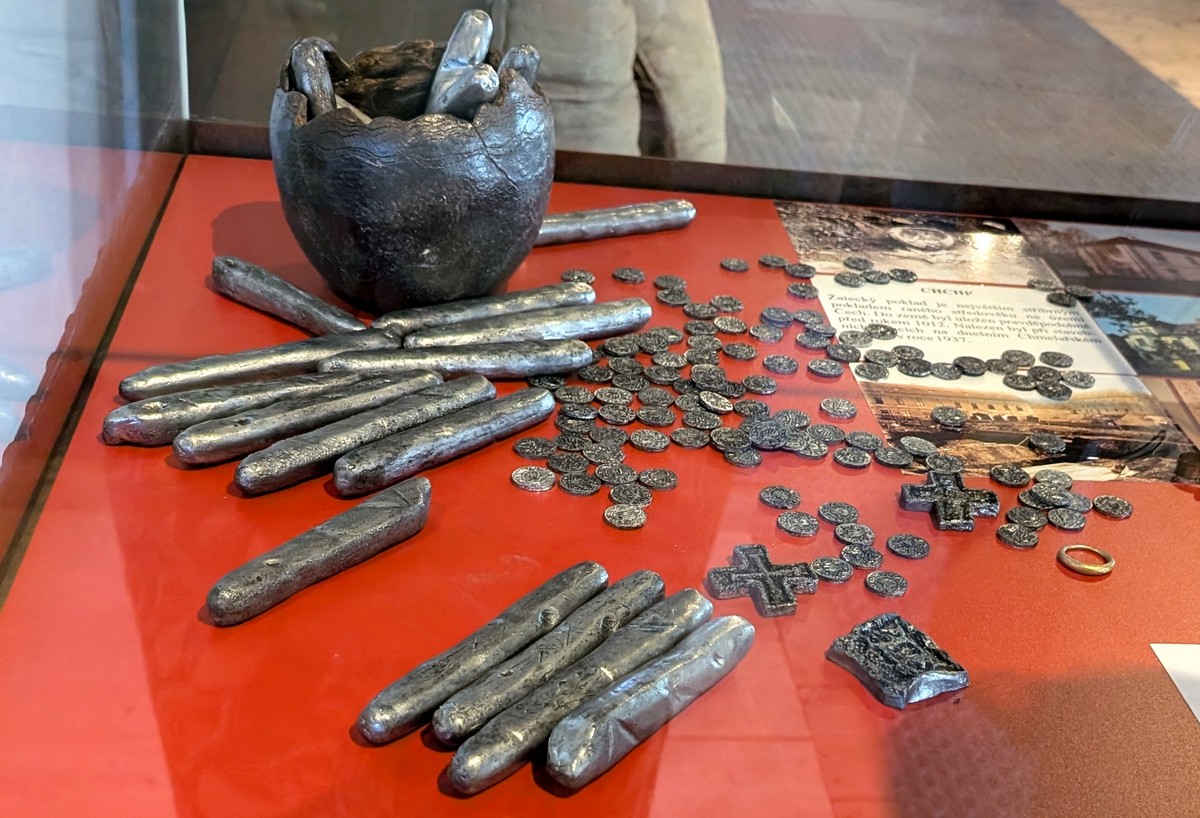
At the end of the tour, we visited a shop where bottled beers from all over the world are displayed. The store also offers hop pralines, hop mineral water, wafers with beer and chocolate flavors and beer schnapps.
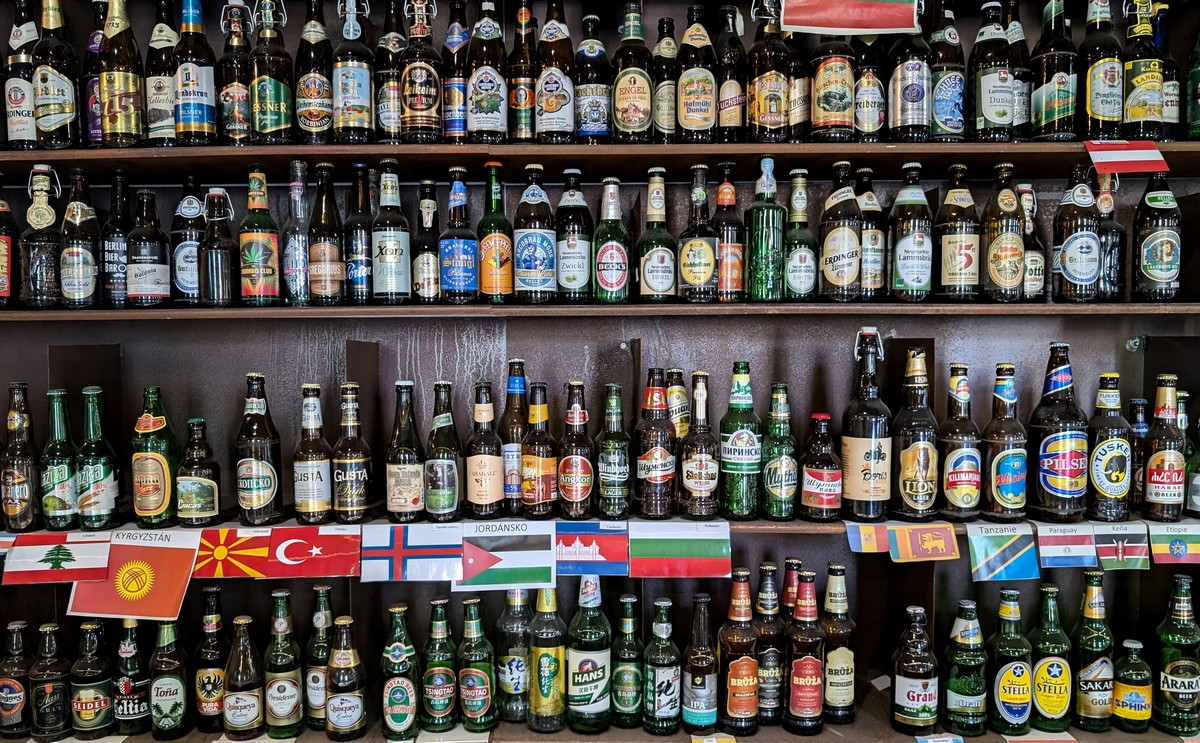
Additionally, you can stamp your notebook here as a souvenir – either with a hop cone or the logo of the temple.
Although the Hop and Beer Temple describes itself as the “Mecca of all hop and beer lovers“, the tour is not only for them. The program is suitable for all age groups. The tourist attraction, completed in 2012, is open all year round.
More information: Hop and Beer Temple
The temple logo looks like a beer receipt: six lines crossed out by a seventh line. We encountered this motif and the number seven in Žatec in several places. However, first we went for a good lunch.
Restaurant and Brewery U Orloje
The restaurant belongs to the Temple of Hops and Beer complex as well. On offer are mainly traditional Czech dishes. I chose a traditional one, too: pork with steamed cabbage and potato dumplings. Yum!
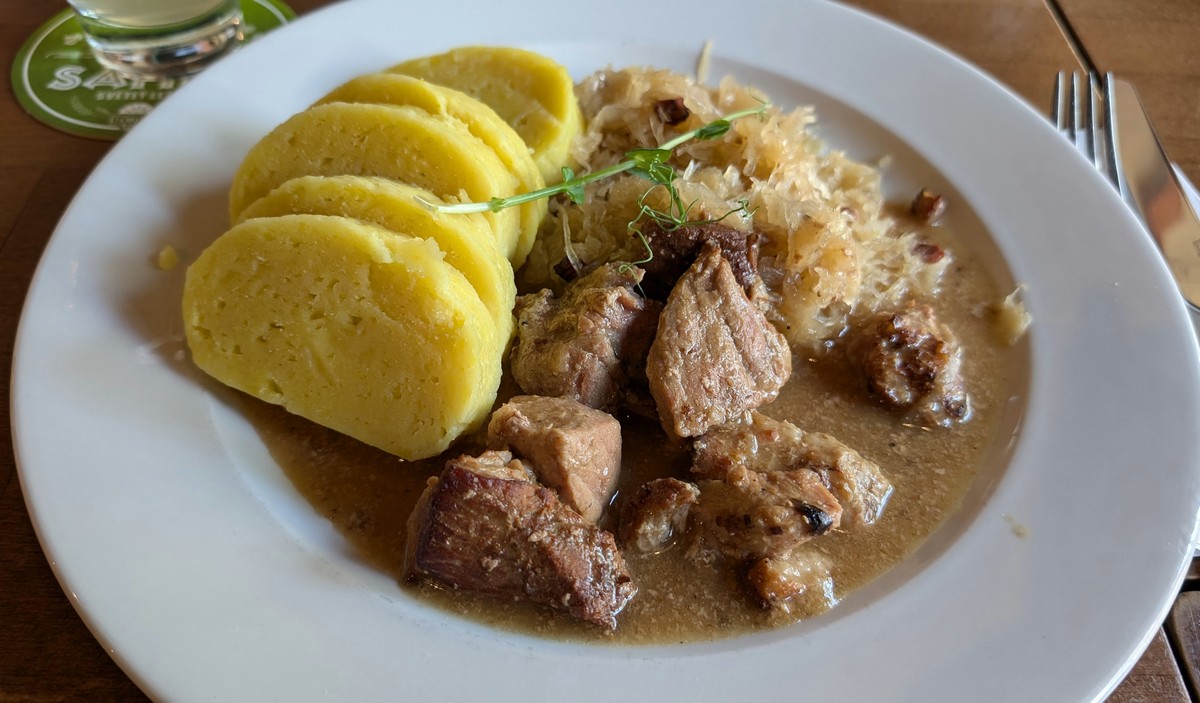
In the restaurant, you will find not only a sign that says “It’s better in a pub than in the world”, but also a microbrewery. Here, beer is brewed in the traditional way from local hops right in front of the visitors.
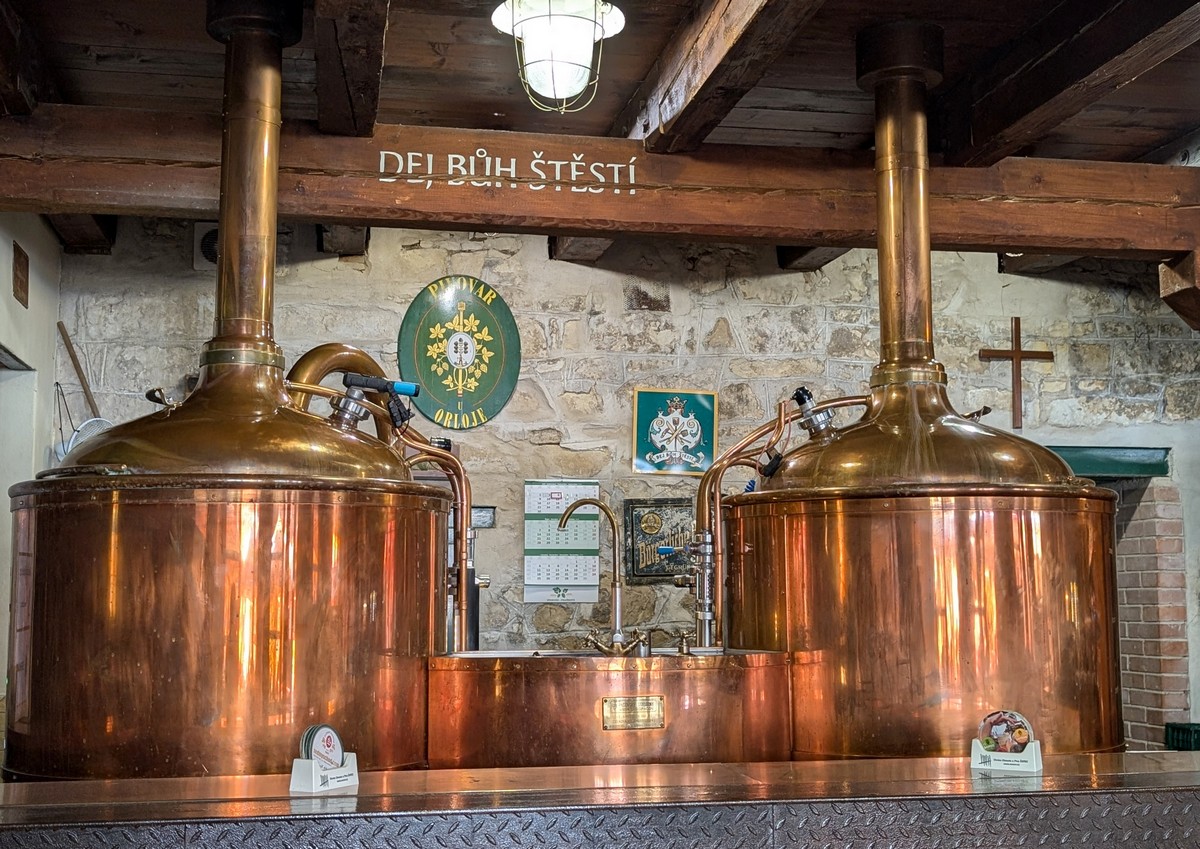
We were offered to taste four types of beer during lunch.
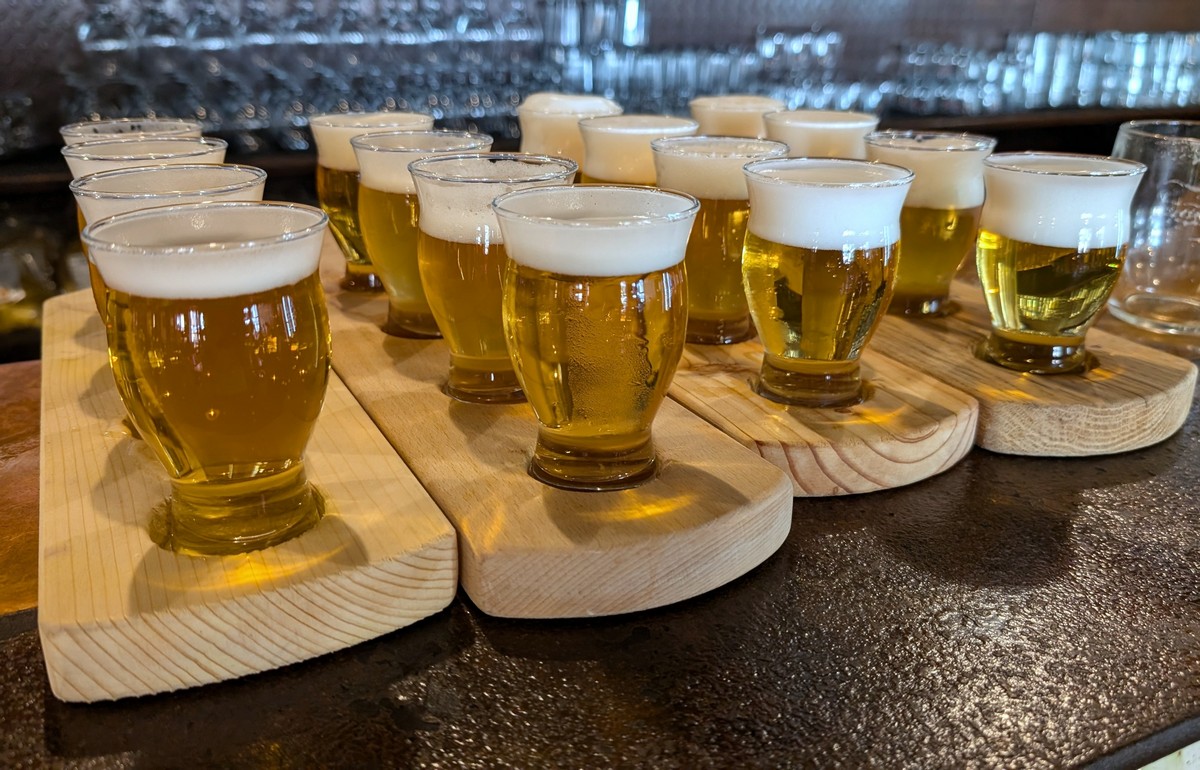
Seventh Step (Sedmý schod) is one of them. The name comes from a cult Czech comedy, nominated for an Oscar. The saying in the film goes: beer should be properly stored in the cellar on the seventh step. From the eighth, it is very cold, until the sixth, still warm.

We also discovered a safe for the regulars here but I could not find out what kind of treasures they hide there. If you come to this restaurant or the Hop and Beer Temple, do not forget how they greet each other here: Dej Bůh štěstí (May God give us happiness!). In the past, not only the brewer but also other helpers prayed for the success of the brew. This greeting remained from those times.
More information: Restaurace U Orloje

Beer Astronomical Clock
The name of the restaurant – U Orloje (At the Astronomical Clock) was not chosen by chance. Indeed, there is an astronomical clock, and of course, it is also related to beer. The clock is located on a wall measuring 7 x 4 m and strikes every full hour.
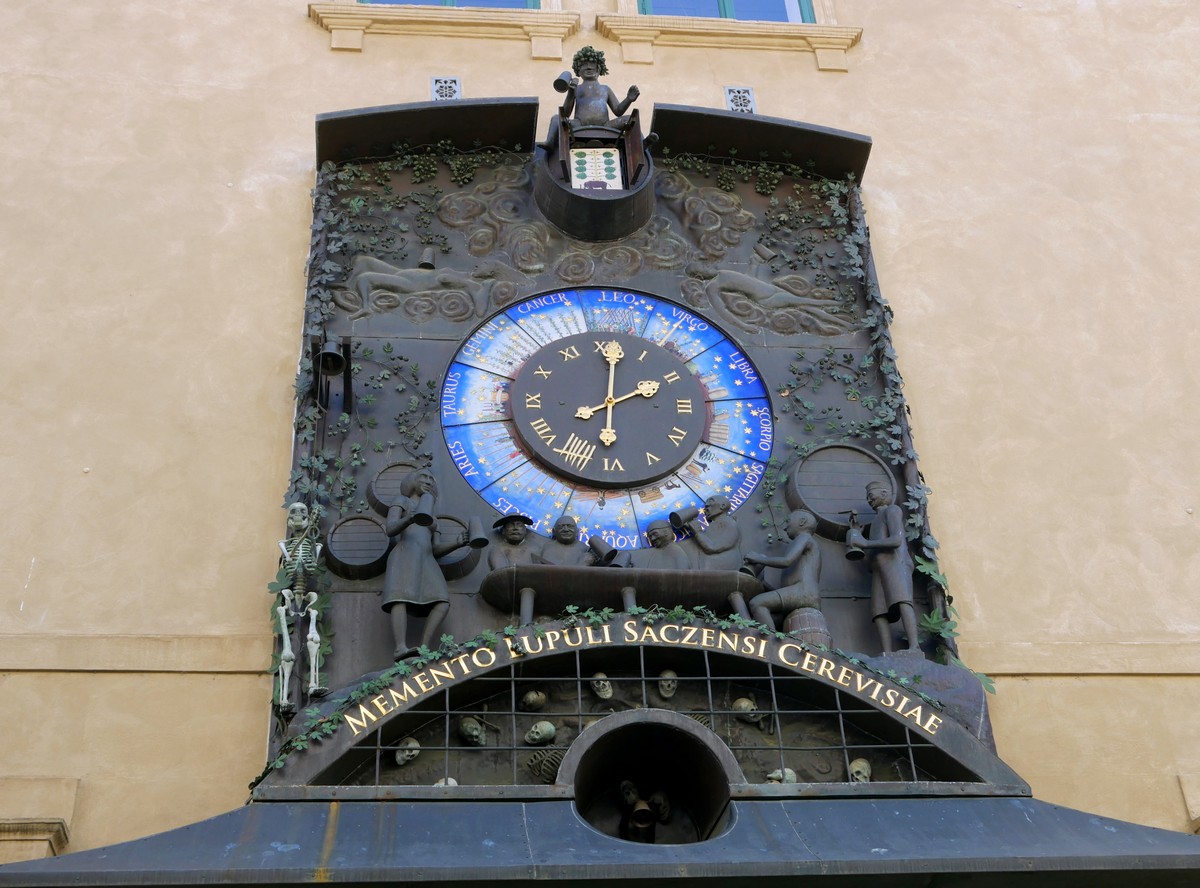
At the very top, there is a figure with a wreath of hops on his head and a glass of beer in his right hand. Instead of figures, playing cards with hop cones appear in the window.
A circle with the stages of growing and processing hops rotates around the dial. Instead of the number 7, there is that beer receipt with seven lines. You will also find Hop Heaven, but also Hell, where drunkards who overdo it with beer consumption fall into.
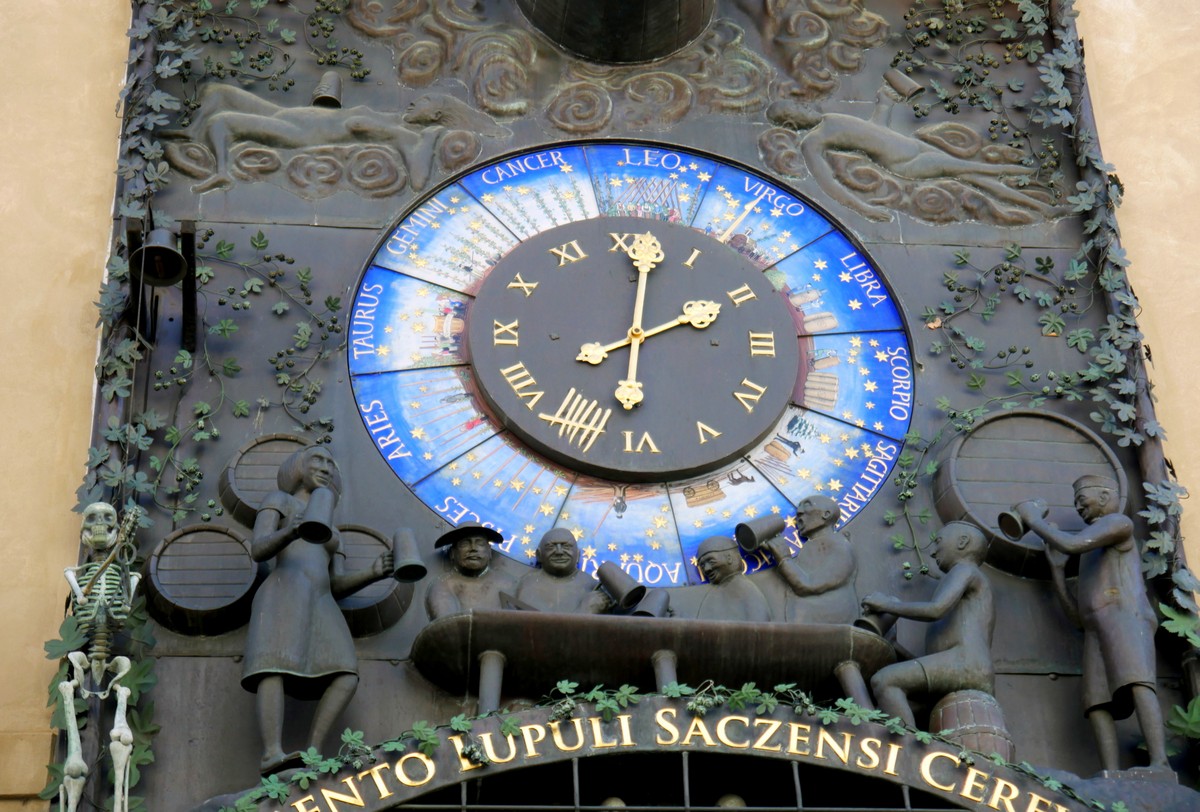
Similar to the famous astronomical clock in Prague, this one in Žatec also has a skeleton which rings a bell every hour.
Hop Lighthouse
After the show of the astronomical clock, we visited another attraction in the area – the Hop Lighthouse – a 49 m high tower, which we noticed immediately when we arrived in the town. There are seven hop columns at the very top of this landmark of the town. The mystical number 7 again!
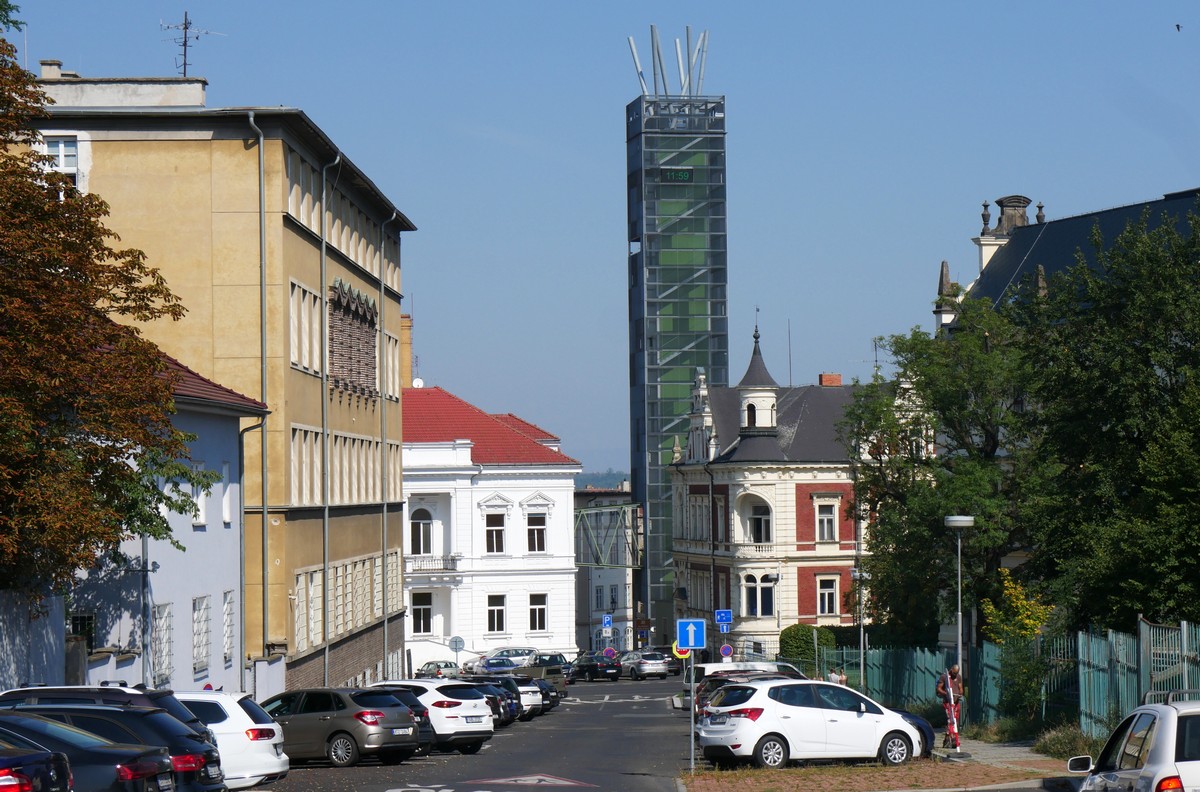
You can go up the stairs, we took the elevator. We put on 3D glasses and while riding the elevator, we “flew” over the whole city.

There was a nice view from the Hop Lighthouse. Now we understand why Žatec is also called the town of chimneys that never smoked.
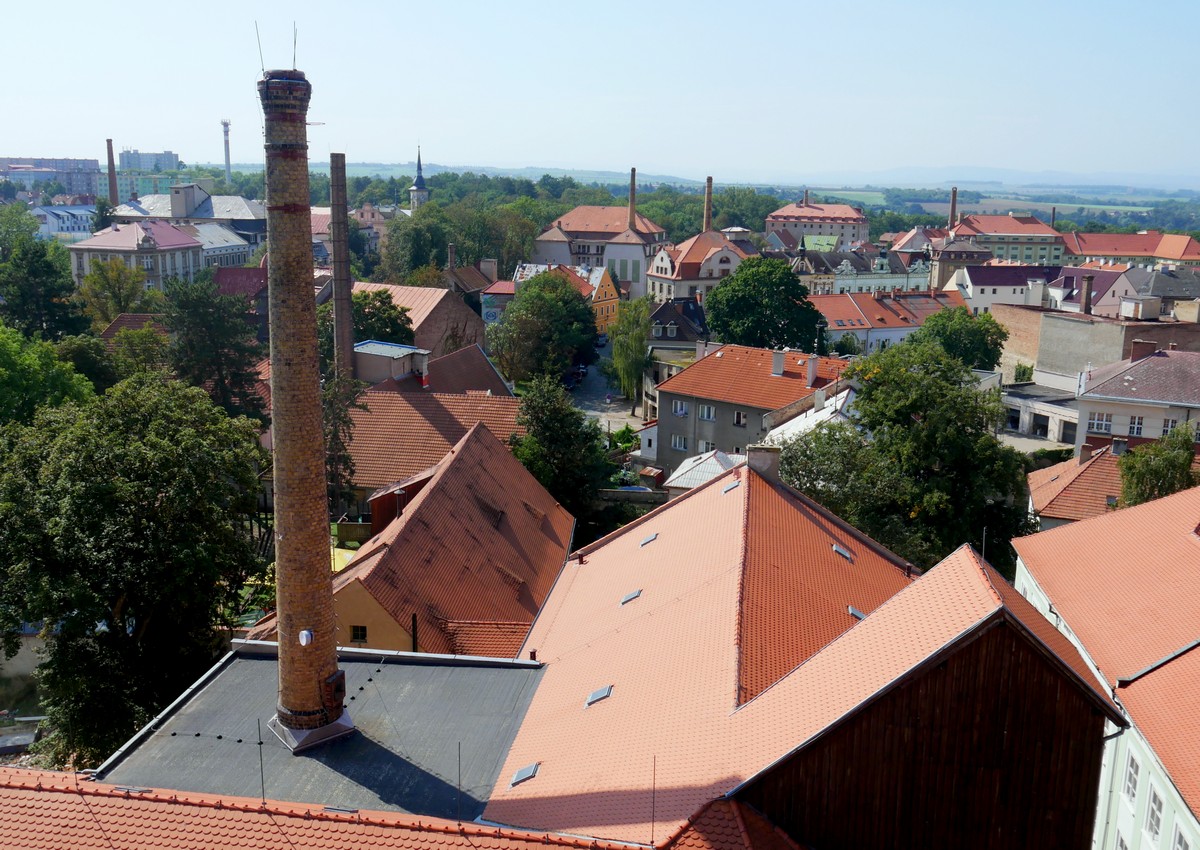
Already in the 12th century, hop traders needed additional buildings. This is how today’s Prague suburb was created – a zone entirely dedicated to hops. The construction of these structures was influenced by the properties of hops, which are light but demanding on surface area when stored. Ventilation is also important so that the hops do not lose their color. Thus, warehouses, drying and packaging plants were built here, where the hops were further processed. The chimneys were used for ventilation. The next steps were to sell and export to the world. This entire zone of technical monuments, historical buildings and a landscape with the most valuable and fertile hop farms, which testifies to a long-term, never-broken tradition of growing, breeding and processing hops, was registered in the UNESCO World Heritage List in September 2023.
In addition to these attractions related to the history of hops and brewing in Žatec, you can visit the funny Homolupul Museum, the Žatec Brewery, which successfully exports its beer to the world, and the Hop Museum (7 geysers and 7 columns in front of the building!), where you can find exhibits of machines, tools and technologies used in beer production.
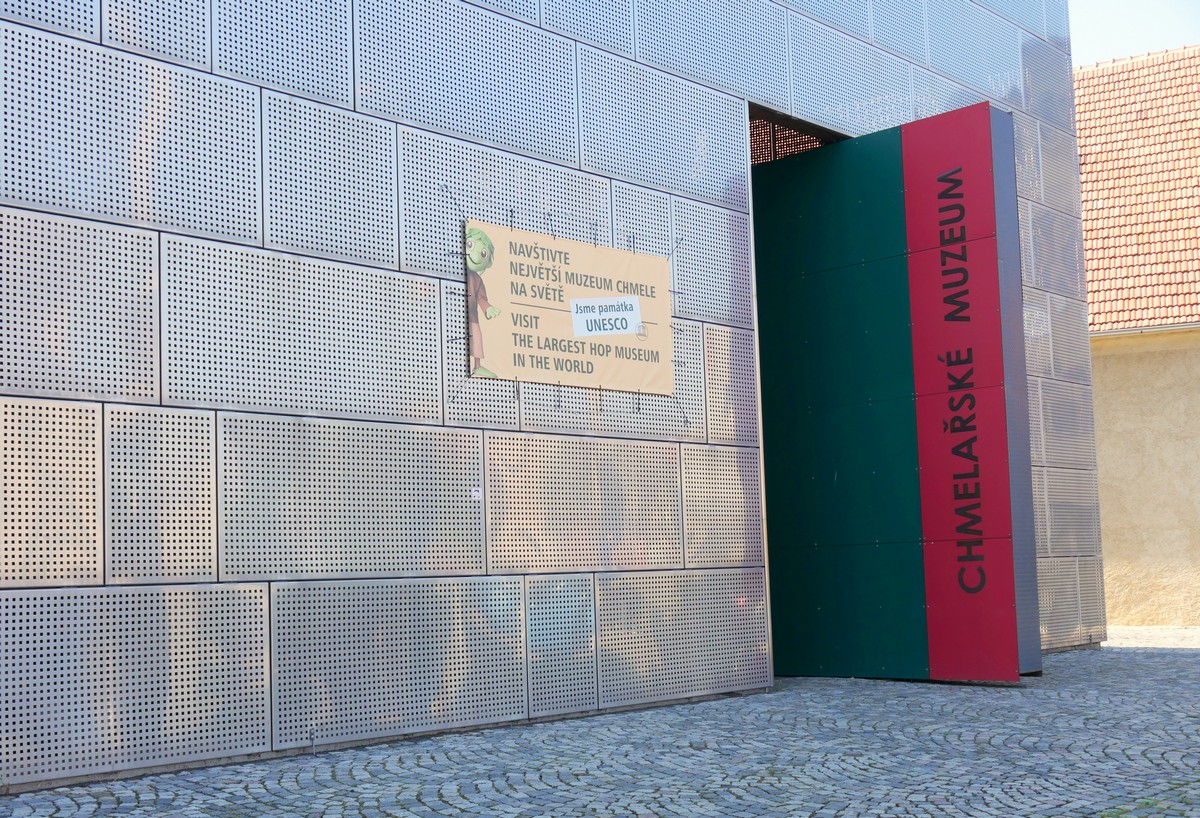
A Tomb and The Town Hall
We went to the main square, where we discovered the secret of why the town is so fond of the number 7. A plaque on the pavement, near the plague column of the Holy Trinity, points out the place where the grave of the oldest beer drinker was discovered!
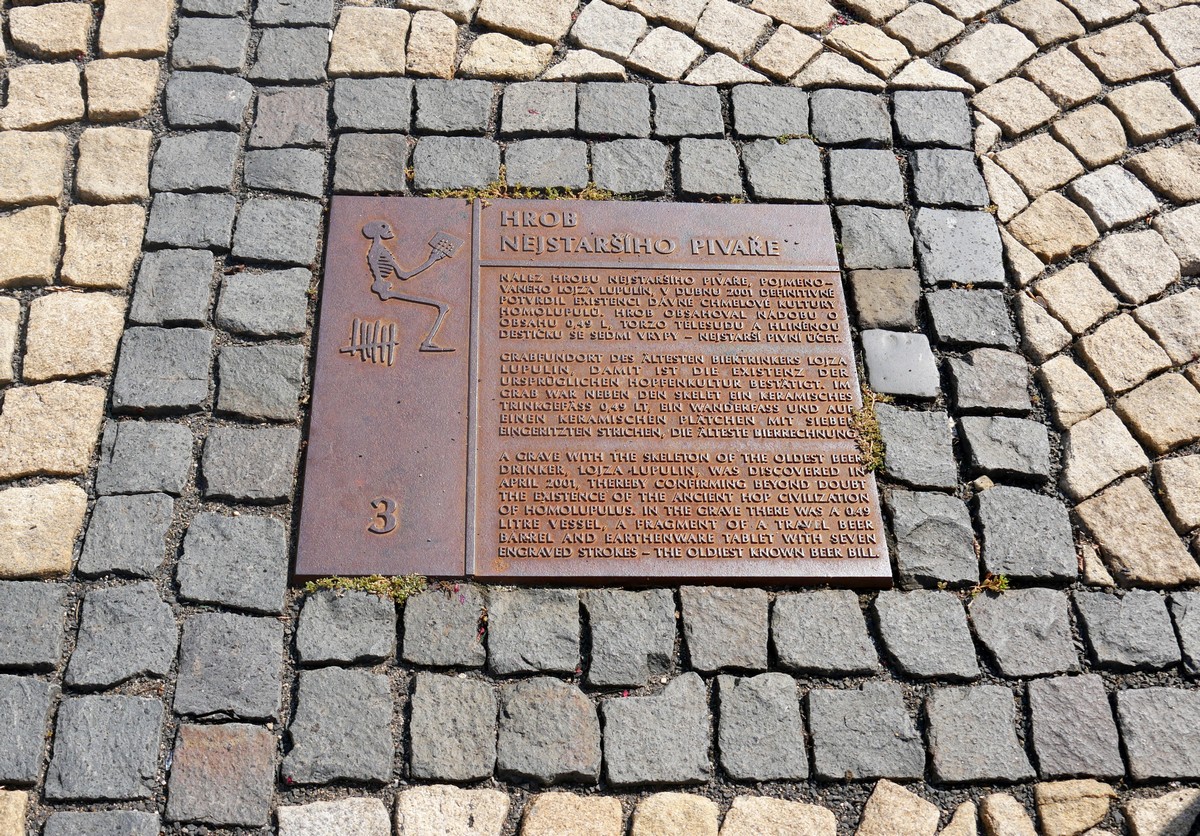
Professionally, he was called Homo Lupulus, but locals call him Lojza Lupulin (the Homolupul Museum in the Hussite bastion is dedicated to him). In addition to the skeleton, a clay container containing 0.492 l (a pint) and a clay plate engraved with six lines crossed out by a seventh were allegedly found in the grave. The oldest beer receipt in the world! Whether you believe all this, I will leave it to you. Regardless, I will tell you that the grave was discovered on April Fools’ Day (in 2001)… Now, it was clear to us where the popularity of the number 7 came from.
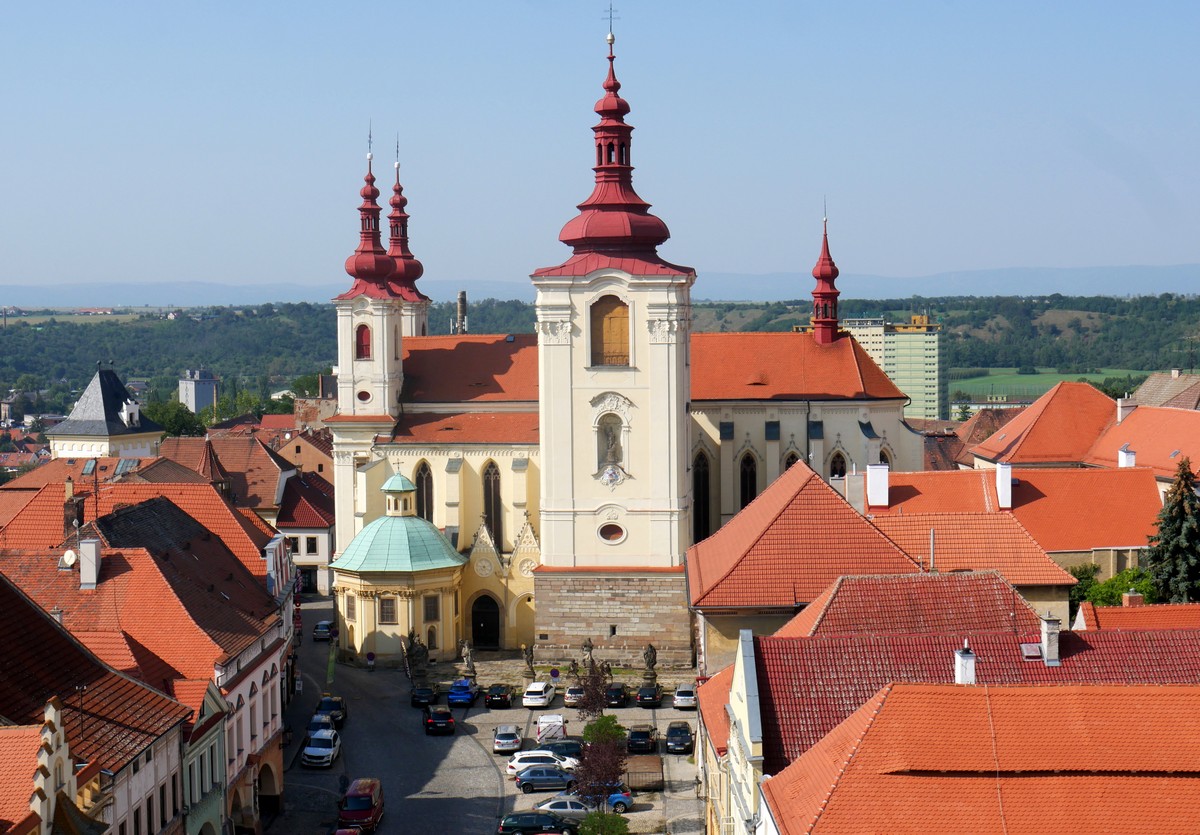
The historic core of the city is a monument reserve. The square is lined with Renaissance houses and the remains of fortifications. The Church of the Assumption of the Virgin Mary and the Town Hall are located here as well.
The first written mention of Žatec (Saaz in German) dates from 1004 when hops were already grown here. The emergence of the feudal town was completed by important privileges granted to it by Czech king Přemysl Otakar II. in 1265. However, the Thirty Years’ War destroyed everything. Further development of hops and brewing took place only in the 18th and 19th centuries. Today, Žatec has 19,000 inhabitants.

The Town Hall has a 47 m high tower, which is open to the public. Inside, there is the exhibition Žatec in the Transformations of Time. We also met the figure of the city notary Jan from Žatec from the year 1400, who is known in German-speaking countries as the author of the work The Plowman and Death.
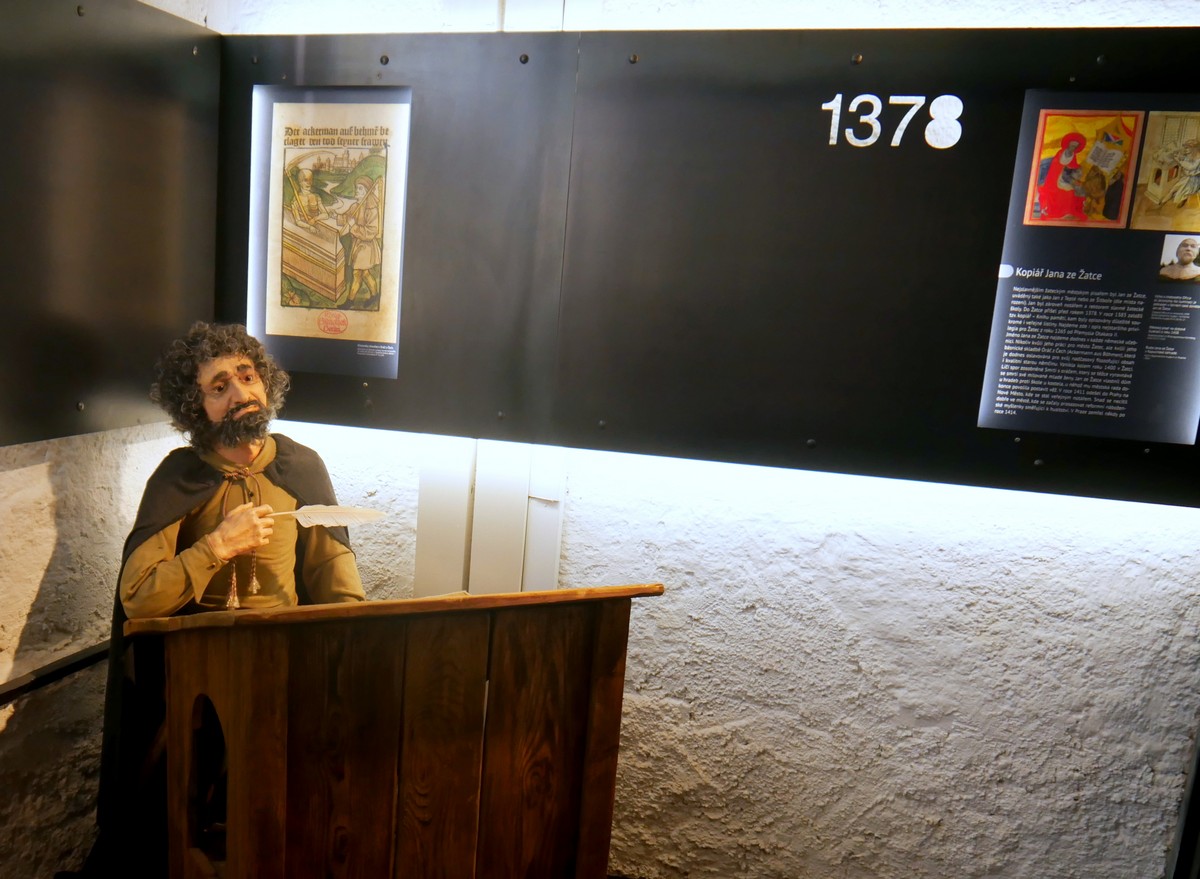
The tower offers a wonderful view of the entire square. Note the odd windows on the roof of the house on the right side of the photo. They are the so-called oxeyes for venting the water vapours that were created during the drying of hops in the attic.

The synagogue (the yellow building) is the second largest in the Czech Republic.
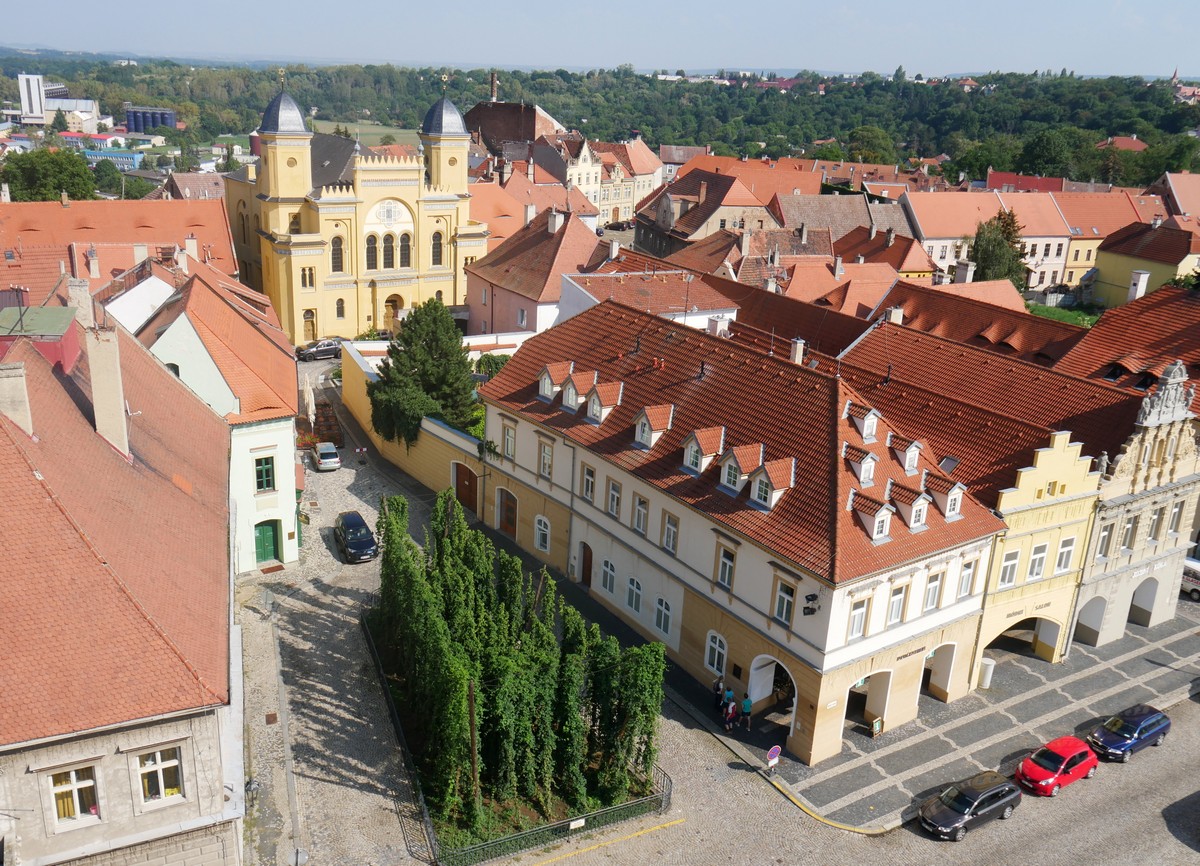
At the square – right next to the information center – there is also the smallest hop field in the world!
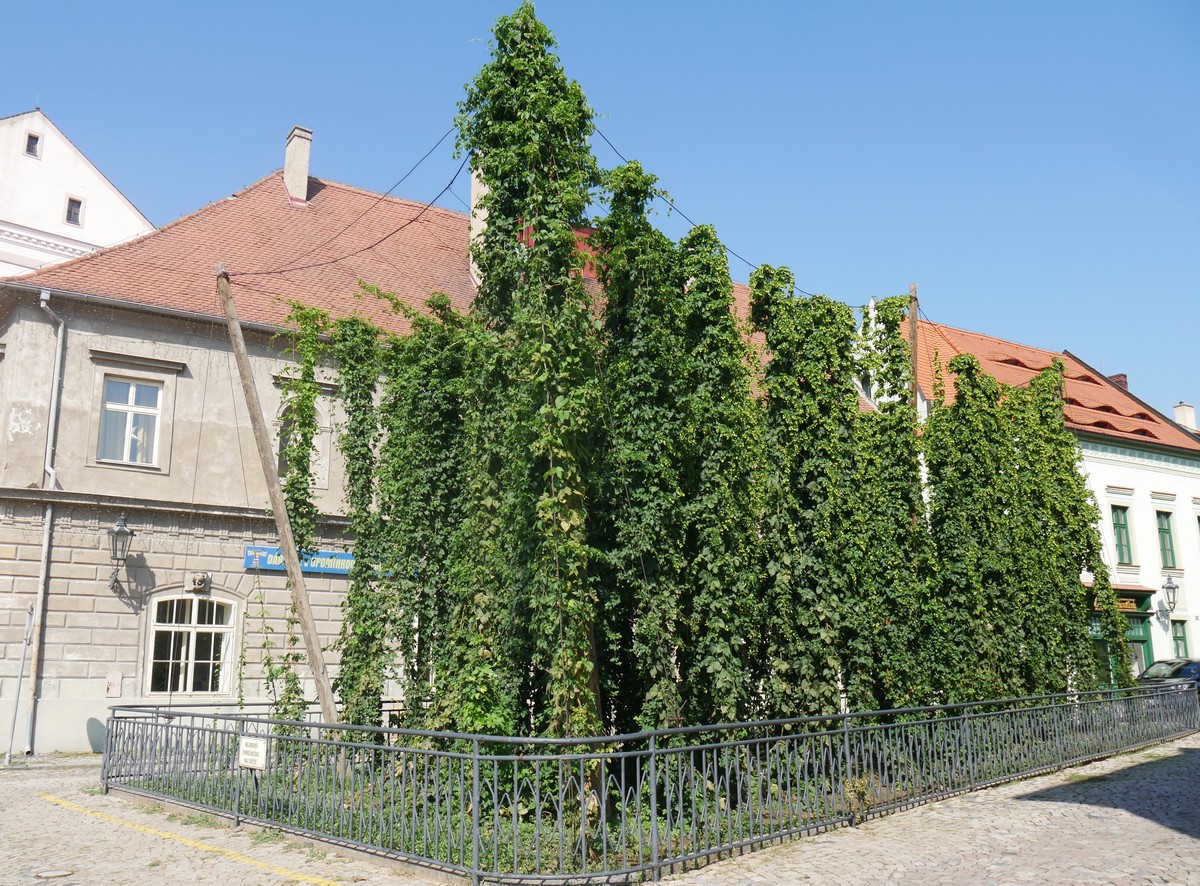
The picturesque scenery of the former royal city has served filmmakers as a backdrop several times – from the Jewish ghetto, through Dickens’s London and revolutionary Paris, to the scenery of an ordinary town in communist Czechoslovakia. For example, the film Yentl with Barbra Streisand and the films Oliver Twist and Les Misérables were filmed here.
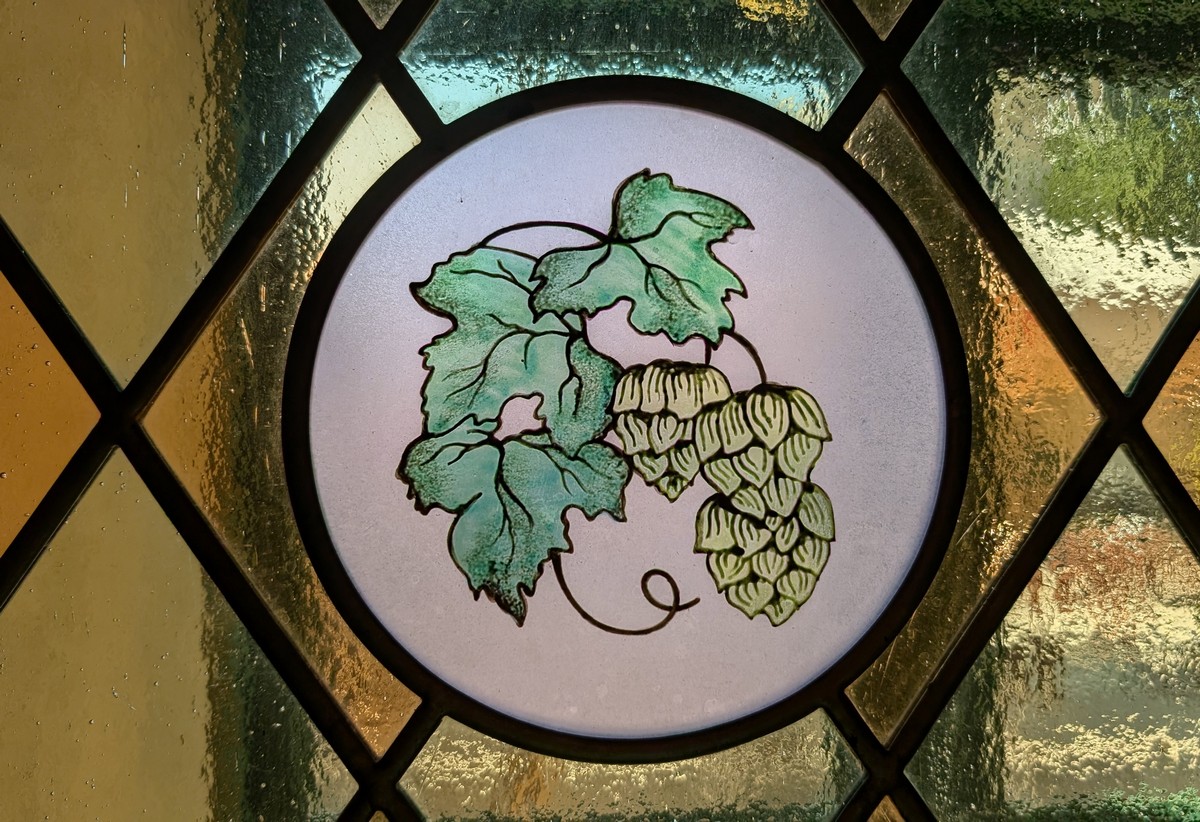
Meder’s House
In the 14th century, 235 houses in Žatec received the right to brew beer (interestingly, this right applied to the building, not to the owners). One of them is Meder’s House, named after the last German owners who bought it in 1919. It is one of the oldest houses in Žatec, originally a late Gothic burgher’s house (as evidenced by two Gothic cellars), after fires in the 18th century, however, rebuilt in the Baroque style.
At the beginning of the 21st century, the house was threatened with demolition, the roof was missing, and only the perimeter walls remained of the building. Fortunately, it was reconstructed according to period photographs. After uncovering the floor, they also found a small treasure here – five coins and rooster bones, which served as protection for the house from misfortune. Who knows, maybe it was thanks to those bones that the house was saved. Today, there is a museum.
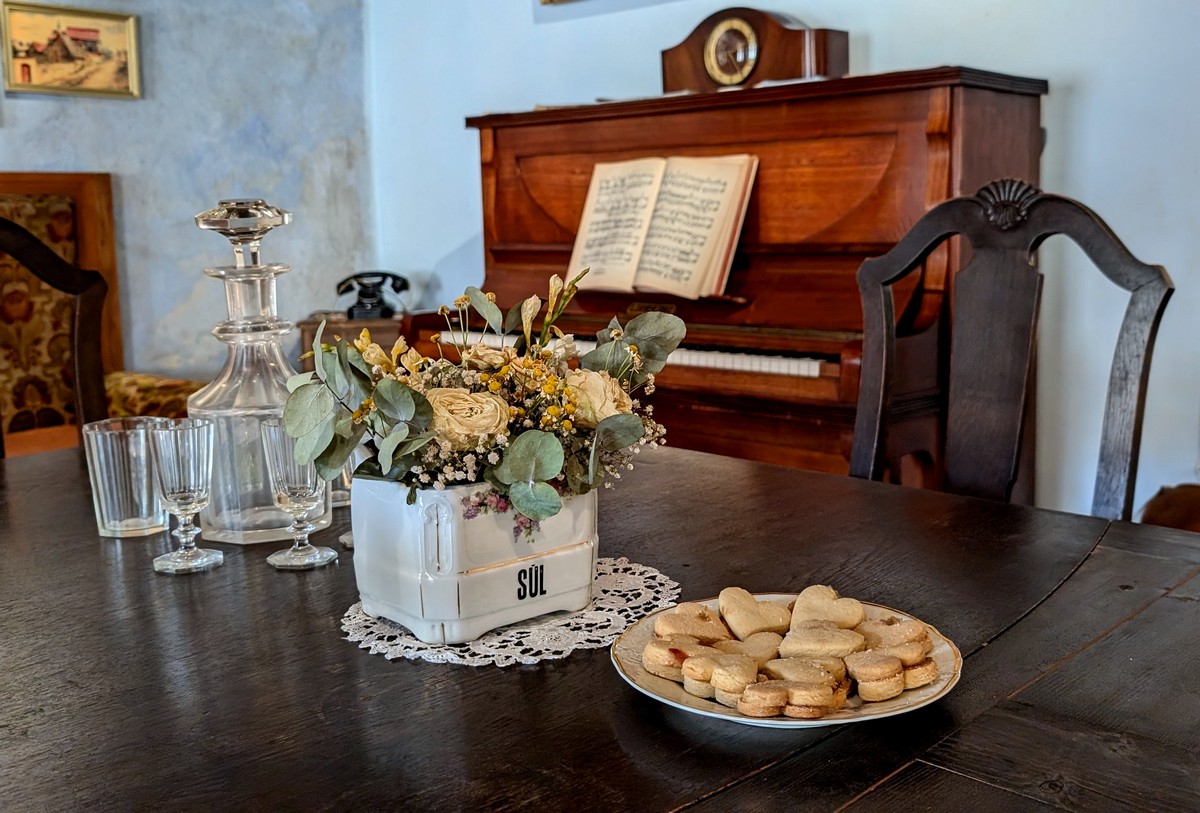
I liked the kitchen the most. Several items reminded me of my Moravian grandmother’s kitchen equipment, where I used to spend my summer vacations.
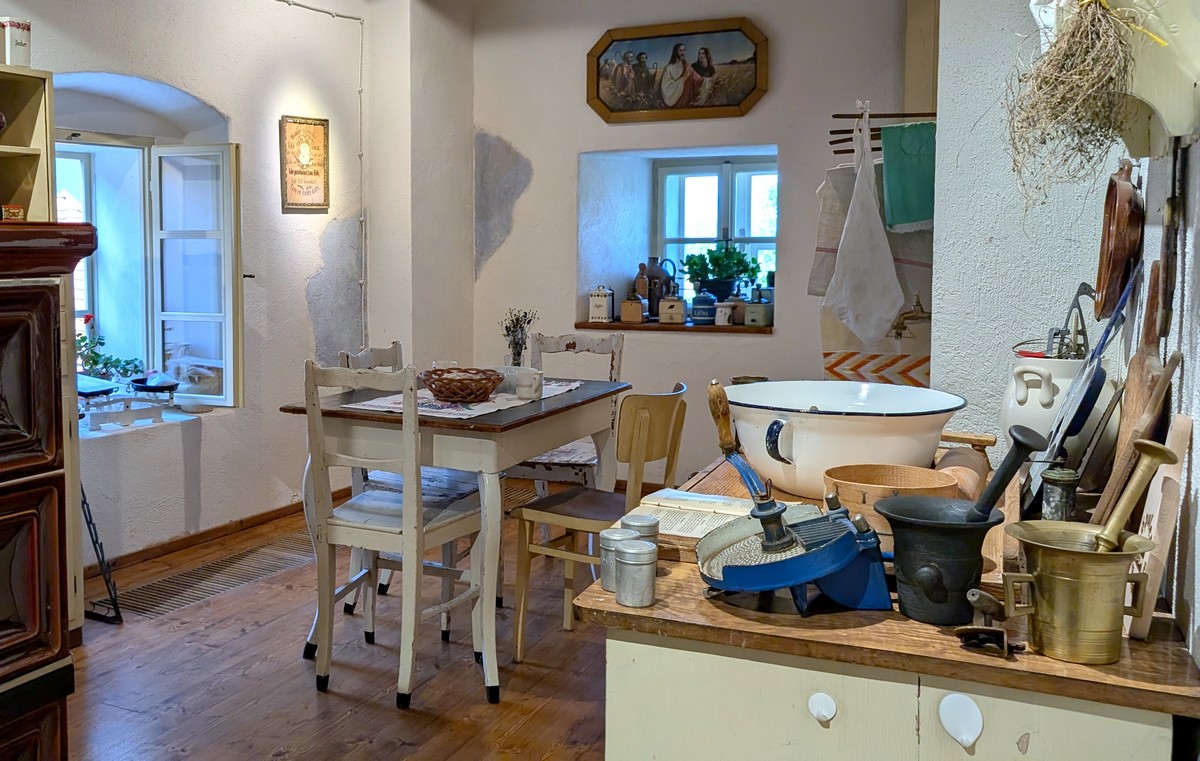
We visited the town of Žatec when it was preparing for its biggest festival Dočesná (the first weekend in September), when the hop harvest is celebrated.
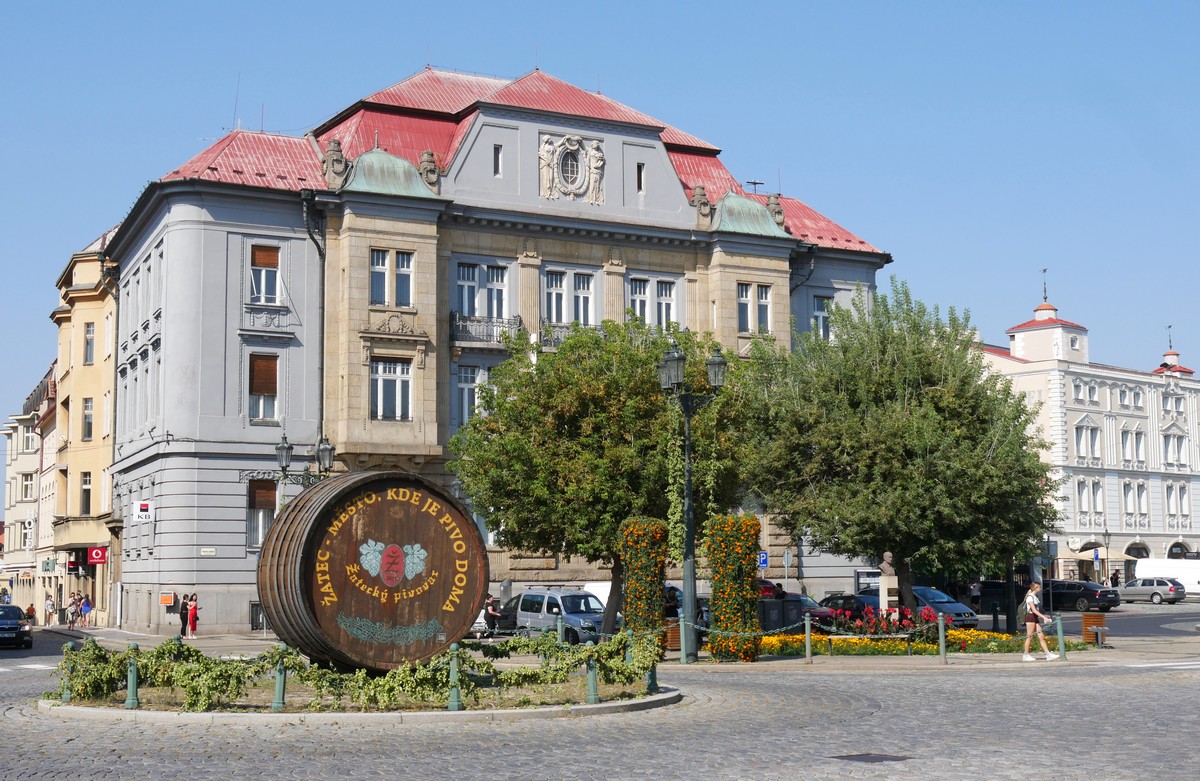
Hop garlands hung in the city, carousels and other attractions for children were being built at the column of St Florian and four brewers were already brewing Osvald Beer, named after Karol Osvald, the most important local hop breeder. Although they all use the same ingredients, each beer will definitely be different, which visitors can try during an anonymous tasting. In addition, 50-60 breweries from the Czech Republic and abroad (e.g. from Japan) present themselves at the festival every year.
So cheers and May God give us happiness!
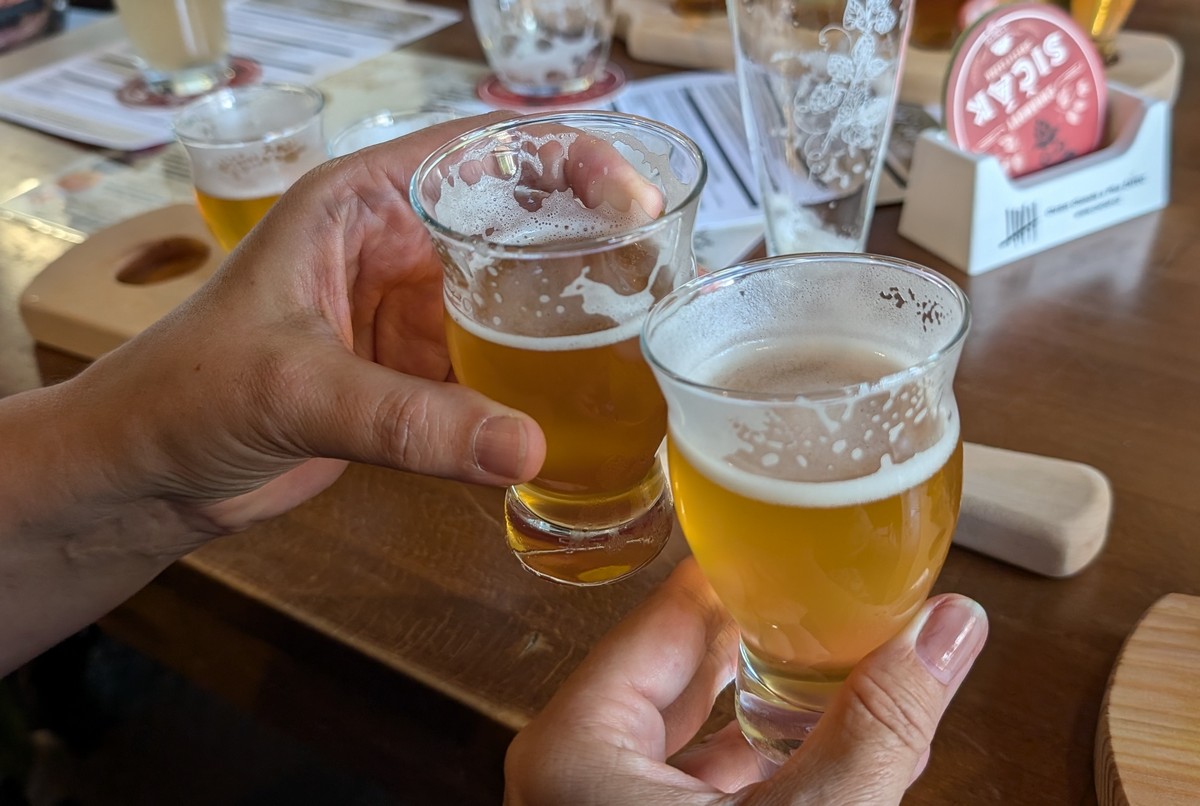
Viac informácií o Česku: VisitCzechia
Text: © Copyright Ingrid, Travelpotpourri
Fotos: © Copyright Ingrid, Travelpotpourri

 TRAVEL
TRAVEL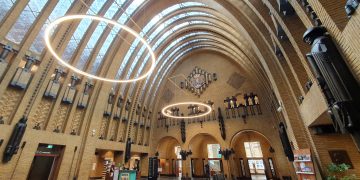
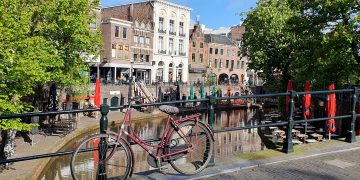


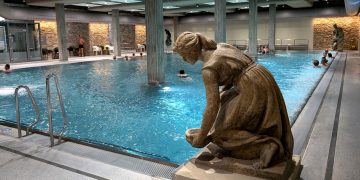


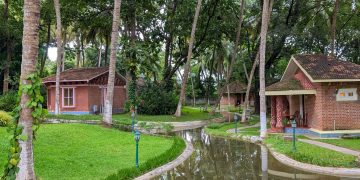
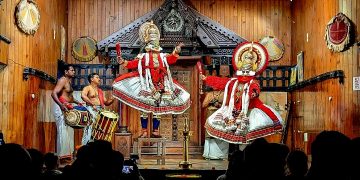
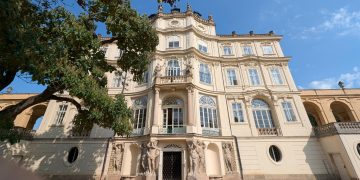
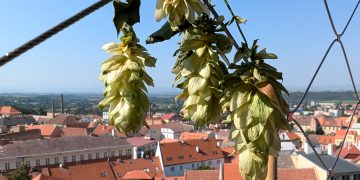

 RECIPES WITH A STORY
RECIPES WITH A STORY











 AUSTRIA-VIENNA
AUSTRIA-VIENNA
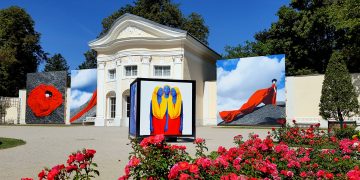





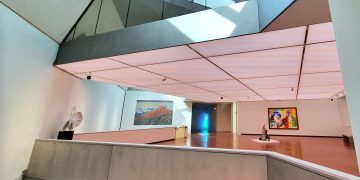


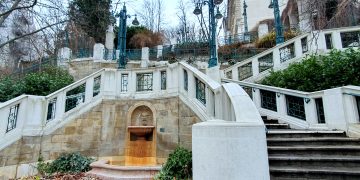

 SLOVAKIA-BRATISLAVA
SLOVAKIA-BRATISLAVA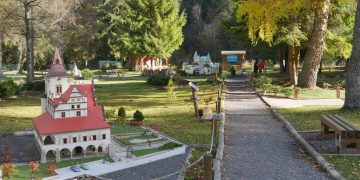
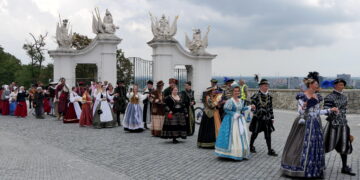


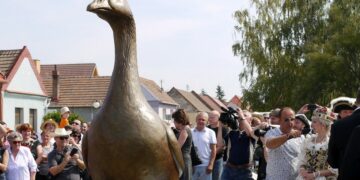

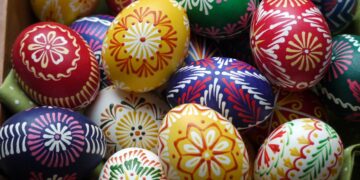
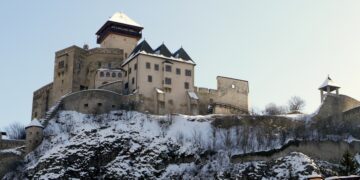
 EVENTS
EVENTS
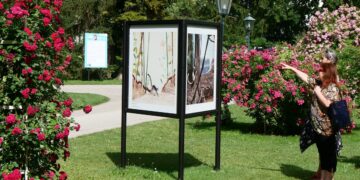



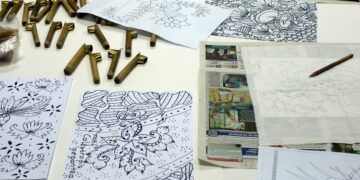


 INTERVIEWS
INTERVIEWS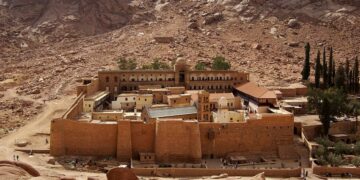







 Jatayu Earth’s Center – The Largest Bird Sculpture in the World
Jatayu Earth’s Center – The Largest Bird Sculpture in the World Ploskovice – A Hidden Gem in Northern Czechia
Ploskovice – A Hidden Gem in Northern Czechia

